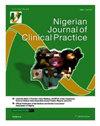In Vitro Evaluation of Color and Surface Roughness Changes of Polyetheretherketone, Monolithic Zirconia, and Resin Nanoceramics Exposed to Staining Liquids
IF 0.7
4区 医学
Q3 MEDICINE, GENERAL & INTERNAL
引用次数: 0
Abstract
This study aims to investigate color stability and surface roughness of polyetheretherketone (PEEK), zirconia, and hybrid ceramics while stored in different liquids. A total of 240 specimens were prepared from monolithic zirconia, PEEK, and hybrid ceramics. All specimens were polished using rubber sets with different grain sizes. Color parameters (L*, a*, b*) were measured three times using a dental spectrophotometer in standard D65 lightning. Each group was divided into eight different groups to be kept in eight different solutions as distilled water, cola, red wine, tea, coffee, heptane, citric acid, and 50% ethanol. Specimens were held in solutions at 37°C for 12 days. Color measurements were repeated, and color change (ΔE) was calculated using the CIE Lab formula. The color difference of PEEK specimens was found above the clinically acceptable limit; however, color differences for monolithic zirconia produced by coffee were found within the clinically acceptable limits. ZR and HC specimens’ color change values were found between threshold values (1<ΔE < 3.3). The differences observed in surface roughness levels amongst the ZR specimens could be caused by the polishing instrument and procedure. The color change of the materials was within acceptable limits, whereas the surface roughness increased more than 0.2 µm. Especially cola, heptane, and red wine significantly increased the mean surface roughness.聚醚醚酮、整体氧化锆和树脂纳米陶瓷暴露于染色液后颜色和表面粗糙度变化的体外评估
本研究旨在调查聚醚醚酮(PEEK)、氧化锆和混合陶瓷在不同液体中储存时的颜色稳定性和表面粗糙度。 研究人员从整体氧化锆、PEEK 和混合陶瓷中制备了 240 个试样。所有试样均使用不同粒度的橡胶组进行抛光。使用牙科分光光度计在标准 D65 雷电下测量颜色参数(L*、a*、b*)三次。每组分为八组,分别置于蒸馏水、可乐、红酒、茶、咖啡、庚烷、柠檬酸和 50%乙醇等八种不同的溶液中。标本在 37°C 溶液中保存 12 天。重复测量颜色,并使用 CIE 实验室公式计算颜色变化(ΔE)。 结果发现,PEEK 试样的色差超过了临床可接受的范围;而咖啡生产的整体氧化锆的色差则在临床可接受的范围之内。ZR 和 HC 试样的颜色变化值介于临界值(1<ΔE < 3.3)之间。在 ZR 试样中观察到的表面粗糙度水平差异可能是抛光仪器和程序造成的。 材料的颜色变化在可接受的范围内,而表面粗糙度增加了 0.2 微米以上。尤其是可乐、庚烷和红葡萄酒会显著增加平均表面粗糙度。
本文章由计算机程序翻译,如有差异,请以英文原文为准。
求助全文
约1分钟内获得全文
求助全文
来源期刊

Nigerian Journal of Clinical Practice
MEDICINE, GENERAL & INTERNAL-
CiteScore
1.40
自引率
0.00%
发文量
275
审稿时长
4-8 weeks
期刊介绍:
The Nigerian Journal of Clinical Practice is a Monthly peer-reviewed international journal published by the Medical and Dental Consultants’ Association of Nigeria. The journal’s full text is available online at www.njcponline.com. The journal allows free access (Open Access) to its contents and permits authors to self-archive final accepted version of the articles on any OAI-compliant institutional / subject-based repository. The journal makes a token charge for submission, processing and publication of manuscripts including color reproduction of photographs.
 求助内容:
求助内容: 应助结果提醒方式:
应助结果提醒方式:


